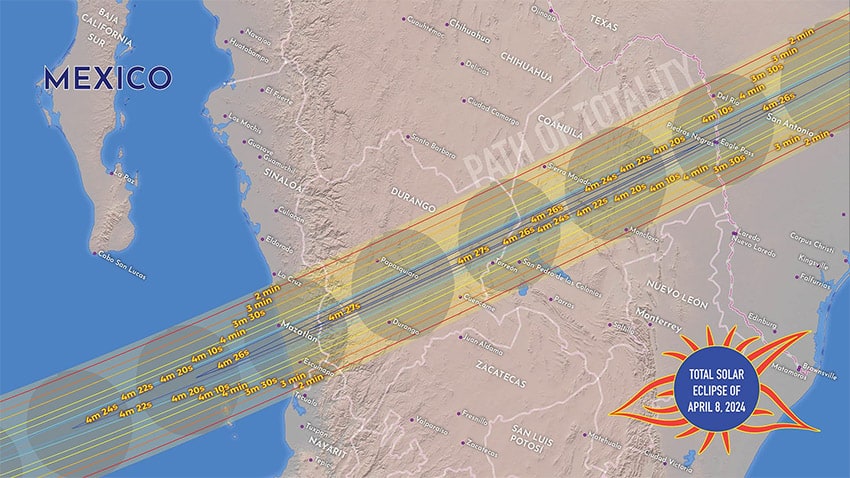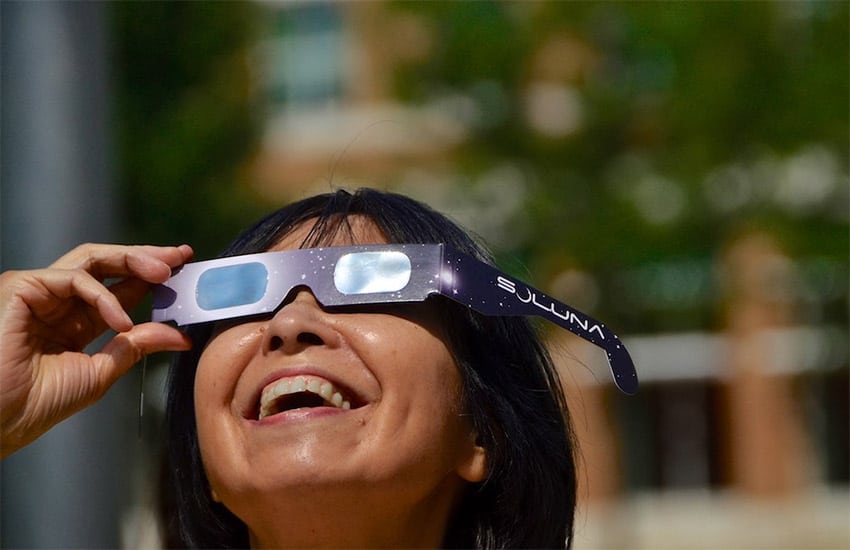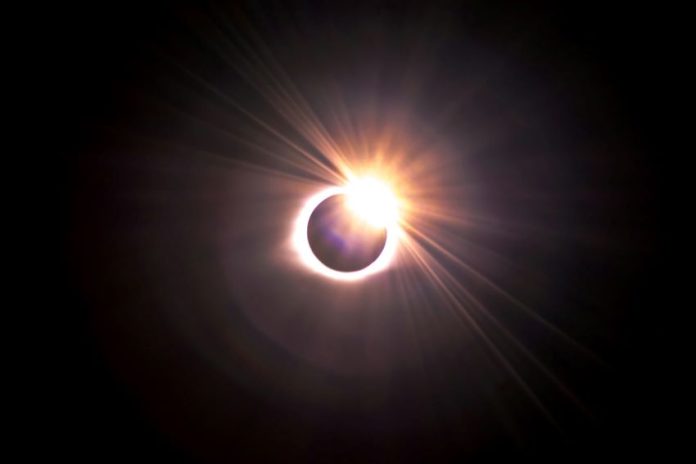President Andrés Manuel López Obrador revealed on Monday that he’ll be in Mazatlán for the solar eclipse on April 8.
So will thousands of others.
The metropolis on the coast of Sinaloa happens to be one of the best places in the world to experience the upcoming phenomenon — which is why thousands of eclipse-chasers, amateur astronomers and even NASA officials will be there along with the president.
And come mid-morning on April 8, the city and nearby areas will be plunged into darkness for 4 minutes and 17 seconds as the eclipse first hits land on a path that will continue northeasterly over Torreón, Coahuila; then Dallas, Texas; then Cleveland, Ohio; and eventually Maine and Canada.
López Obrador made his plans known during his Monday mañanera, or morning press conference, noting that Sinaloa Governor Rubén Rocha Moya invited him.
“It will look very good,” AMLO said of the eclipse in Mazatlán. “A very good experience — like seeing a comet.”

According to NASA, the United States’ National Aeronautics and Space Administration, “The Great Mexican Eclipse” — as the Mexican media have taken to calling it — will be the last full eclipse in the region until 2044.
After starting over the Pacific Ocean, the eclipse will begin at 9:51 a.m. in Mazatlán, where they are on Pacific Daylight Time. In much of Mexico, the time will be one hour later, 10:51 Mountain Daylight Time.
The total eclipse in Mazatlán, with the sun at its apex, will be from 11:07 to 11:11 a.m. PDT.
According to the Institute of Geophysics of the National Autonomous University of Mexico (UNAM), other excellent viewing areas in Mexico include Durango city in the state of Durango, and Torreón and Monclova in Coahuila, although the period of darkness will be slightly shorter than in Mazatlán.
Weather permitting, people in these areas will be able to see the sun’s corona, or gaseous outer ring, which is usually obscured by the star’s brightness.
Most of Mexico will see the phenomenon as a partial eclipse. In Mexico City, for example, the moon will cover 79% of the sun.
Wherever you are, NASA warns that it is not safe to look directly at the sun without specialized eye protection.

Sinaloa tourism officials have said they are expecting 120,000 visitors and an economic influx of more than 500 million pesos (US $30 million) for the eclipse. Last week, they were reporting April 8 occupancy of nearly 100% in Mazatlán’s 300 main hotels.
Moisés Ríos, deputy director of Sinaloa’s Tourism Planning and Development office, said two nights at double occupancy in four- and five-star hotels had been going for 35,000 to 40,000 pesos (US $2,100 to $2,700).
With Easter break also in full swing, it should be quite a financial boon for Mazatlán.
“At the end of Holy Week [this week], Easter Week begins, and at the end of that, the eclipse will arrive,” Ríos said. “Mazatlán will be busy like never before.”
With reports from Aristegui Noticias, Infobae and El Economista
